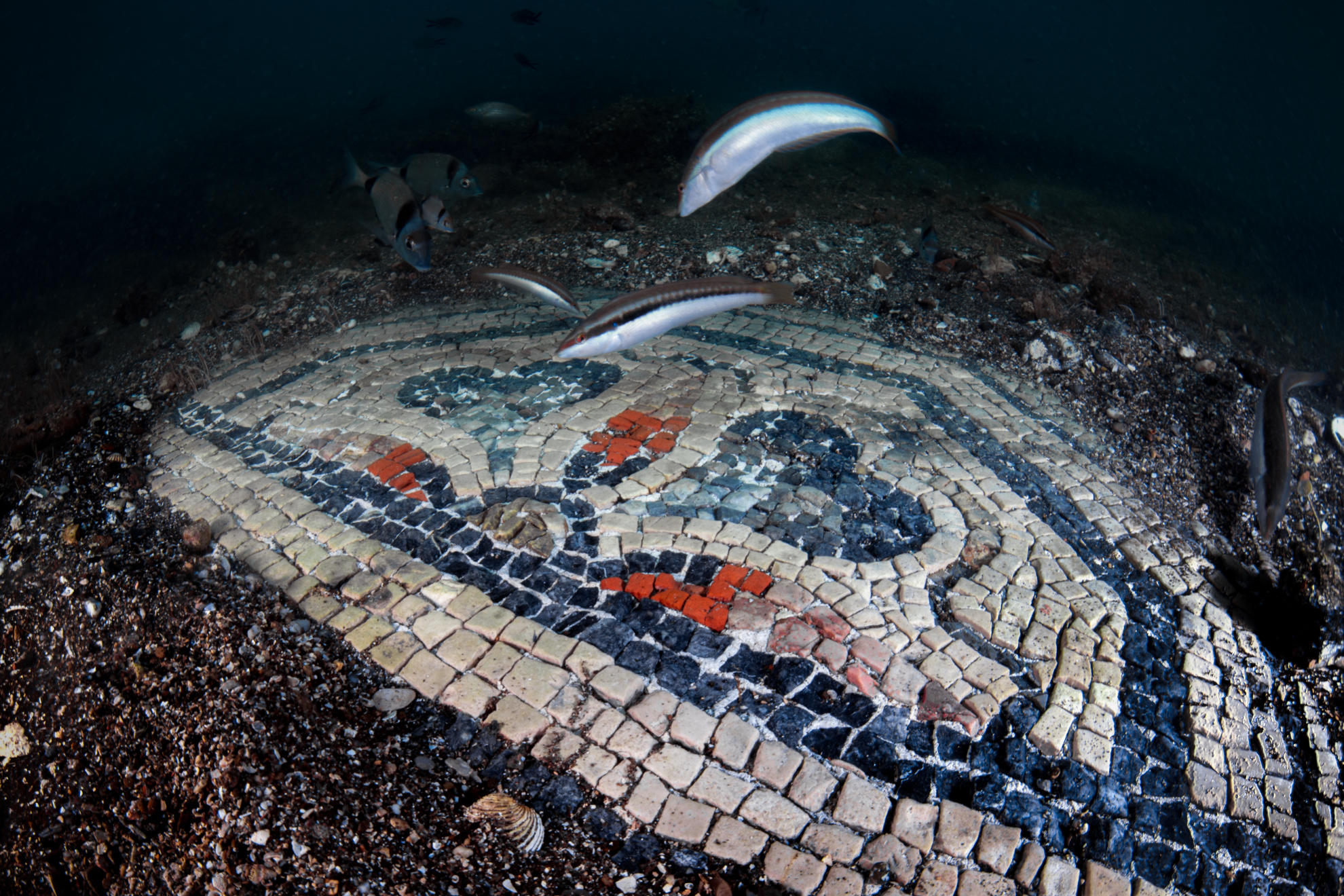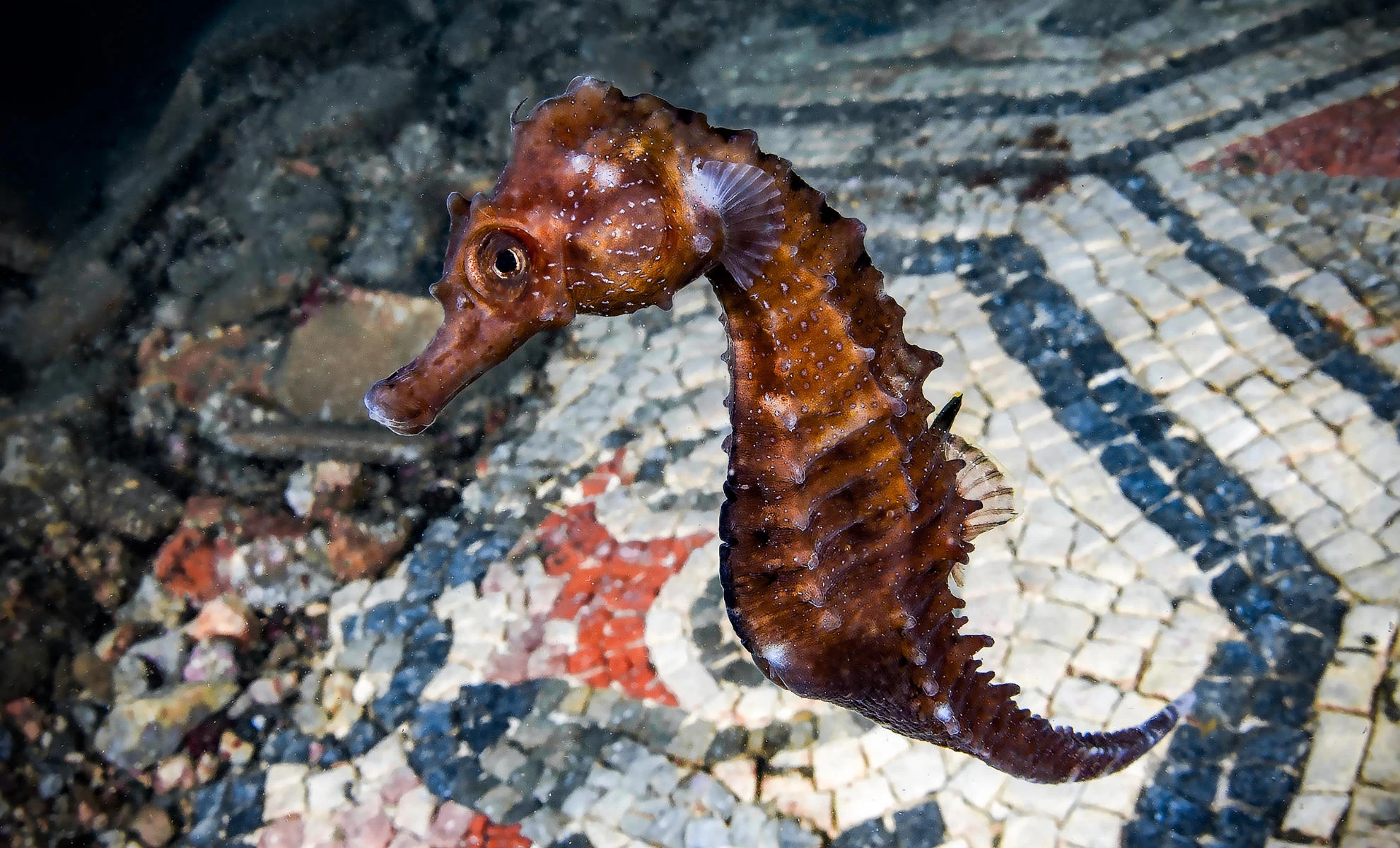Sixty-four years: it is the time that has passed since the discovery of the ancient city of Baia and the new finds. In 1956 the aviator and freediver Raimondo Bucher discovered an entire Roman period city submerged by the sea, in the body of water that surrounds the cities of Bacoli and Pozzuoli, thanks to the photos taken from his plane.
We are in the heart of the ancient Bay, where the bradyseism has totally submerged this piece of ancient Roman civilisation, protecting it from the passing of time. Here the nobles came to spend their holidays and some moments of relaxation. In the area between the Nymphaeum of Claudius and the Villa dei Pisoni, overlooking the then city centre, which sloped down towards the lacus baianus, a thermal complex of over 2500 square metres has been identified, probably part of a private residence still largely unexplored.
Ph. Edoardo Ruspantini

The research started in 2018 from investigations on a polychrome tesserae floor, with a geometric design and composed of juxtaposed octagons, decorated in the centre with stylised flowers, each different from the other. From the floor, we then discovered bases, columns and steps that allowed people to go down into one of the thermal baths. On the outside there is a large platform that protected the walls from the waves. The pier and the floors were raised, in the following years, due to the bradyseism that gave the ancient Romans problems too, as they had to reinforce the structures to avoid their collapse.
Ph. Edoardo Ruspantini

Reconstruction work is then associated with the discoveries made during the investigation phases. The Archaeological Park of the Phlegraean Fields will in fact rebuild the statues inside the rooms using casts, as has already been done in other zones of the area in the case of the Nymphaeum of Punta Epitaffio. A path that is completed with the residential spaces of the villa, with a large peristyle where you can recognise the long ambulatory and the columns that supported it, as well as the large rooms that opened onto it. Outside the complex, right on the side facing the lacus,you can still see the bollards where it was possible to moor boats.
Ph. Edoardo Ruspantini

An immersion that becomes a journey through time. Diving enthusiasts can thus swim among the thermal baths of the ancient city and look closely at perfectly preserved mosaics and inlays. Those who prefer snorkeling can admire the wonder of Submerged Baia from the surface of the water, take in the whole perimeter with their eyes, and reconstruct, step by step, the splendour of this civilisation that grew up on the shores of a vulcanic zone.

